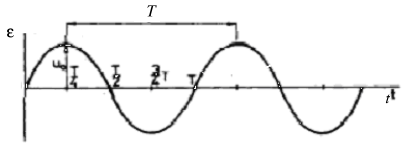Electromagnetic induction
Physical Background
Electromagnetic induction is the phenomenon of the mutual coupling of the magnetic and electric fields, where the electric field is generated whenever a time varying magnetic field is present. For example, in the introductory experiment in the picture above there is a bar magnet moving in the direction of the winding and thus creating the time dependent magnetic field. We can observe the deviation on the connected measuring instrument. This deviation is caused by the time dependent electric field in the coil. This phenomenon is called electromagnetic induction. Electromagnetic induction is used for example in dynamos or alternators, which are the devices for transforming mechanical energy into electrical one.
For the quantitative description of the experiment we need to introduce a few physical quantities and symbols.
Magnetic flux through the area of the winding
If for any point of the plane limited by the winding of the area S, B = const. is fulfilled, then the magnetic flux is defined as


- the change of the magnitude of the magnetic induction B(t) with time,
- the change of the dimension of the surface S(t),
- the change of a mutual orientation of vectors B and dS, α(t).


Figure 2 A rotating coil in the homogeneous magnetic field
The electromotive voltage induced in one winding is, according to the equation (3), (considering the time independence B(t) = const. and S(t) = constant)




Author of study text: Prof. Dr. František Schauer, Univerzita Tomáše Bati ve Zlíně
